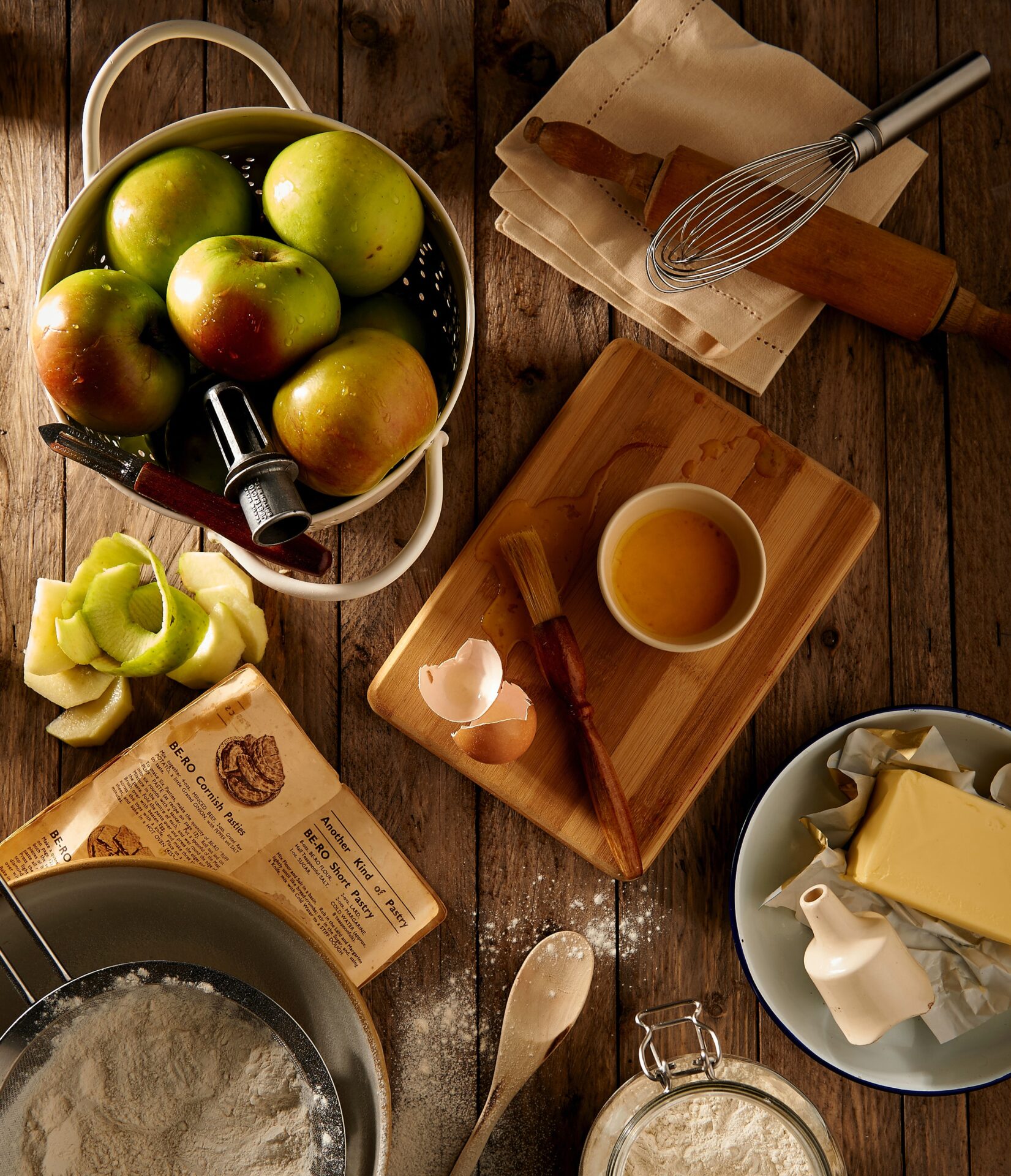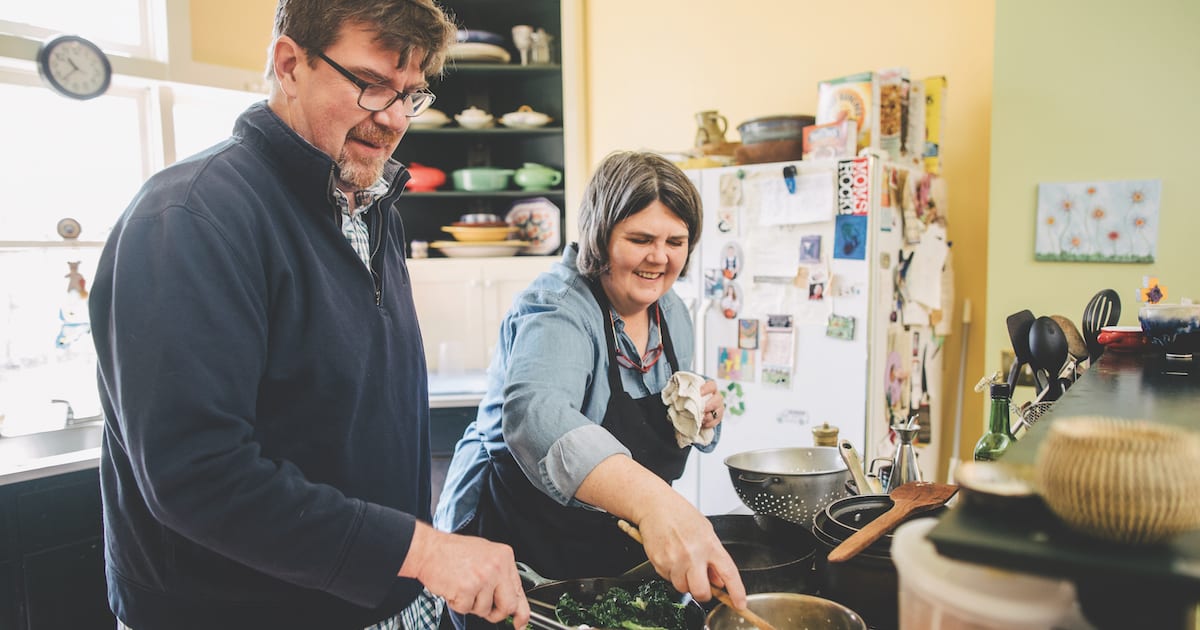Twenty five years after returning home, Ouita Michel has created a mini-restaurant empire built on Bluegrass bounty
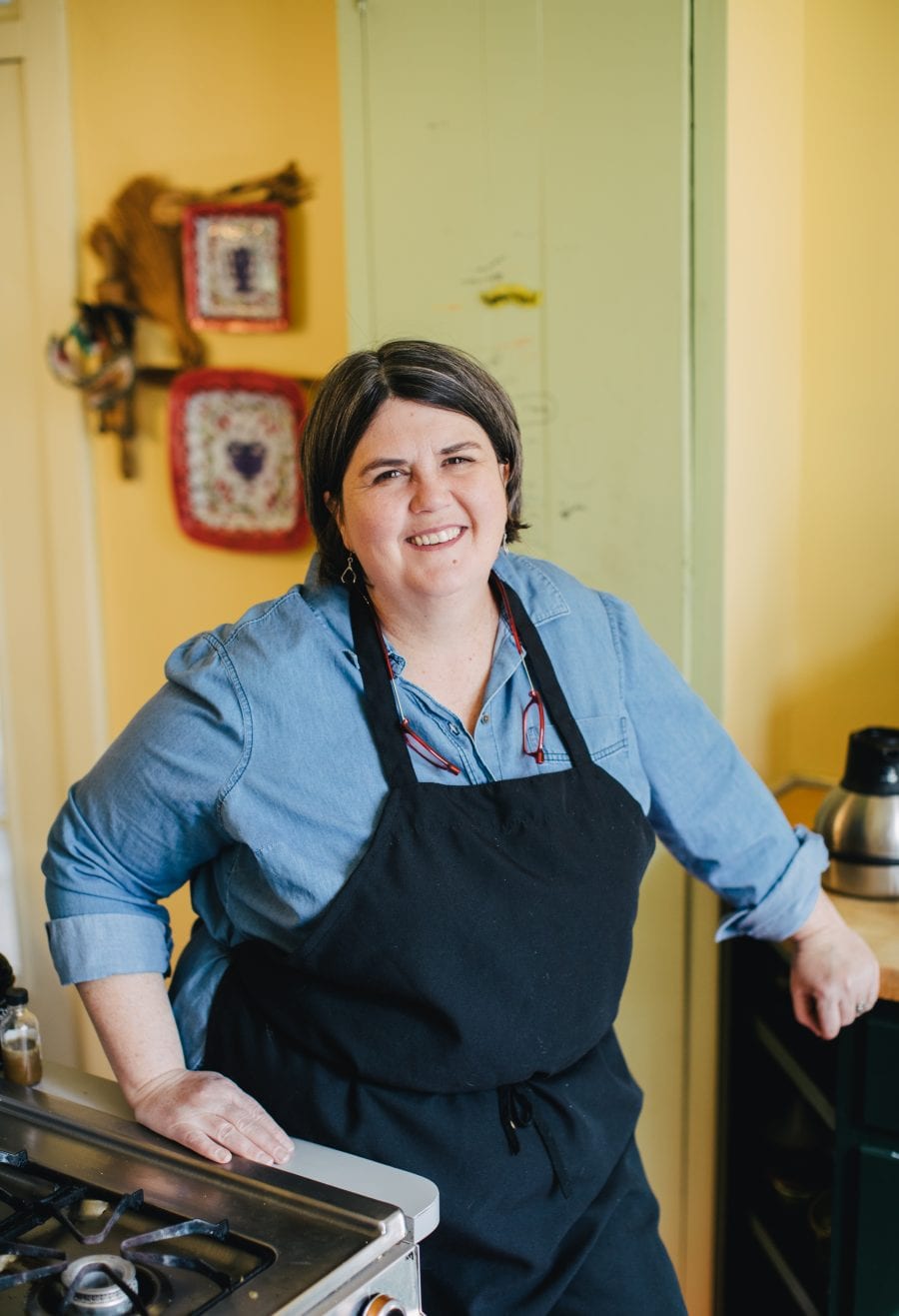
“I can’t count the number of times, after eating my food, people have said, ‘You could have done anything if you’d stayed in New York,’ or, ‘This is good enough to be anywhere.’ I’m thinking, ‘Damn straight it is! Who do you think you’re dealing with?’” The frustration weighting chef Ouita Michel’s voice disappears as she answers her own question with a throaty laugh, part chuckle and part giggle. She quickly reaffirms that leaving the heat of Manhattan’s kitchens and coming home to Kentucky twenty five years ago was not settling, it was choosing. Choosing to rediscover roots; choosing to focus on food, not fanfare (although she’s earned numerous accolades, including multiple James Beard award nominations).
She was ahead of her time in this and other aspects of her Ouita Michel Family of Restaurants—six establishments in and around Lexington (and another one on the way): her white-tablecloth Holly Hill Inn, deli Wallace Station, Smithtown Seafood, Windy Corner Market, Honeywood, and Glenn’s Creek Café, plus a bakery. “I’m loving that now, especially in the South, there’s a renewed recognition of rural areas and smaller cities,” she says. She nods to the scene outside her car window, split-rail fences framing a county road cutting through fields of low, undulating hills. “This is real horse country out here,” she says. It’s the outskirts of Midway, Kentucky, about twelve miles northeast of Lexington (where Michel grew up), home to what she and staff call the “mothership,” her first restaurant, the Holly Hill Inn, and next door, her home with husband Chris and daughter Willa.
Initially, coming home was temporary. She’d moved to New York to attend the Culinary Institute of America when she was 21, and eight years later, in 1993, was engaged and convinced by her mother that she had to get married here. Between dress fittings and invitation picking, she and Chris (who she met at CIA) were going to decide what was next. “We thought we’d end up opening a restaurant in New York; I had no thoughts of staying in Kentucky.” Until she was back on its bluegrass-blanketed soil under wide open skies; the combination was a powerful balm. “As soon as I got here, I realized how much I had missed it and how much I missed my mom,” she says. “It was this instant ‘aah.’” Throw in the realities of New York, and Lexington looked better than ever. “New York is a tough place to open a business,” she says, “and the accessibility of everything here — advice, help, a loan — was appealing.”
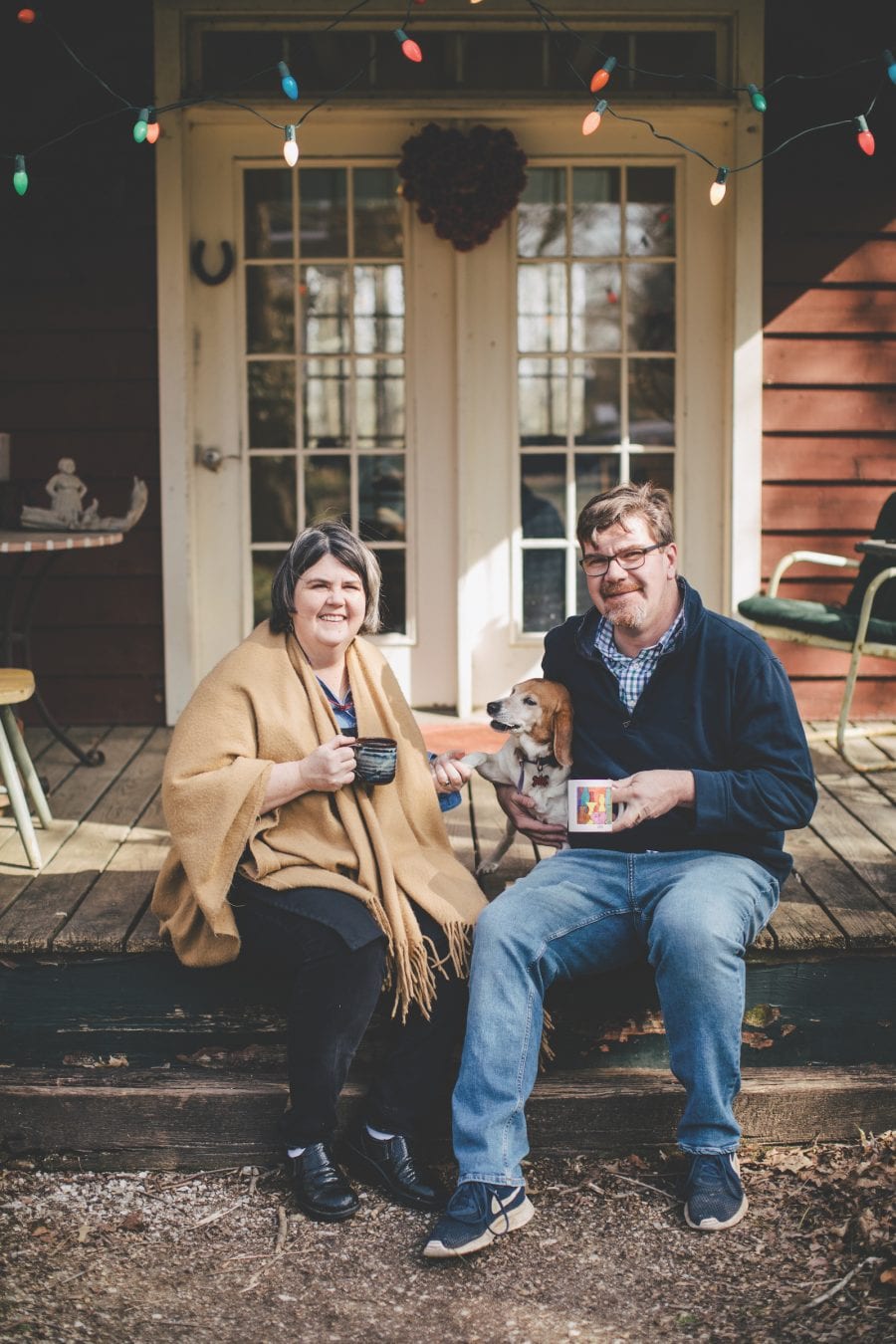
The final incentive to stay was the chance at culinary communion. “I realized that I wanted to be part of a community,” she says. But she brought a little New York with her, an attitude she had to shed to find her Kentucky-centric food philosophy. “I’d been trained in New York, and all my cooking experience was in Manhattan,” she says. “That can make you arrogant. You think you know what constitutes good food and what doesn’t, and you start discounting a lot of the food you grew up with.”
She didn’t have much respect for Kentucky’s unofficial state libation either. When she first got home and was cooking at a downtown Lexington restaurant, bourbon wasn’t big in culinary circles. “There would invariably be someone sitting at the bar, fork in one hand, eating my dish, glass of bourbon in the other. It drove me insane. I thought, ‘They can’t possibly taste the food.’” Today, as the chef in residence at Woodford Reserve, one of Kentucky’s most revered distilleries, she’s done a 180 and often incorporates the spirit in her recipes.
She stresses the way most people think about bourbon has changed dramatically in the last two decades. “And it’s interesting, because I think there’s still a sense in my industry that if you’re not in a big urban environment, you’re not making it, and yet these famed distilleries, out in little places like Versailles, they’re part of a rural economy,” she says. Midway’s got 1,700 residents, and even Lexington (population 318,000) isn’t a huge market. Surrounded by farmland, both place haven’t strayed far from their agrarian background. “I realized that I could have an impact here, that I could change the food culture for the better,” she says.
She’s an outspoken champion of Kentucky-grown and -raised foods (and the folks that produce them)—proof is the more than $2 million in products her restaurants have purchased from area farmers—and it started in 2001 with her quest for quality when she opened Holly Hill Inn. “It’s about the primacy of ingredients,” she says. She wanted fresh—and that means local. But being in Kentucky didn’t immediately translate to being of Kentucky. “A few years in, I saw that what I’m doing is about Kentucky, and the only way you can express Kentucky cuisine really, is to use Kentucky agriculture,” she says, “so my commitment to sourcing locally got stronger.”

At that time, the “eat local” movement was in its infancy, but it was growing in the Lexington area, with Michel helping drive it. “I wanted a supply of good, fresh product, but there weren’t young people going into farming, so I also wanted to be part of an economic solution for farmers, so young people would see, ‘There is this market for my products locally.’ That’s how we really get Kentucky cuisine.”
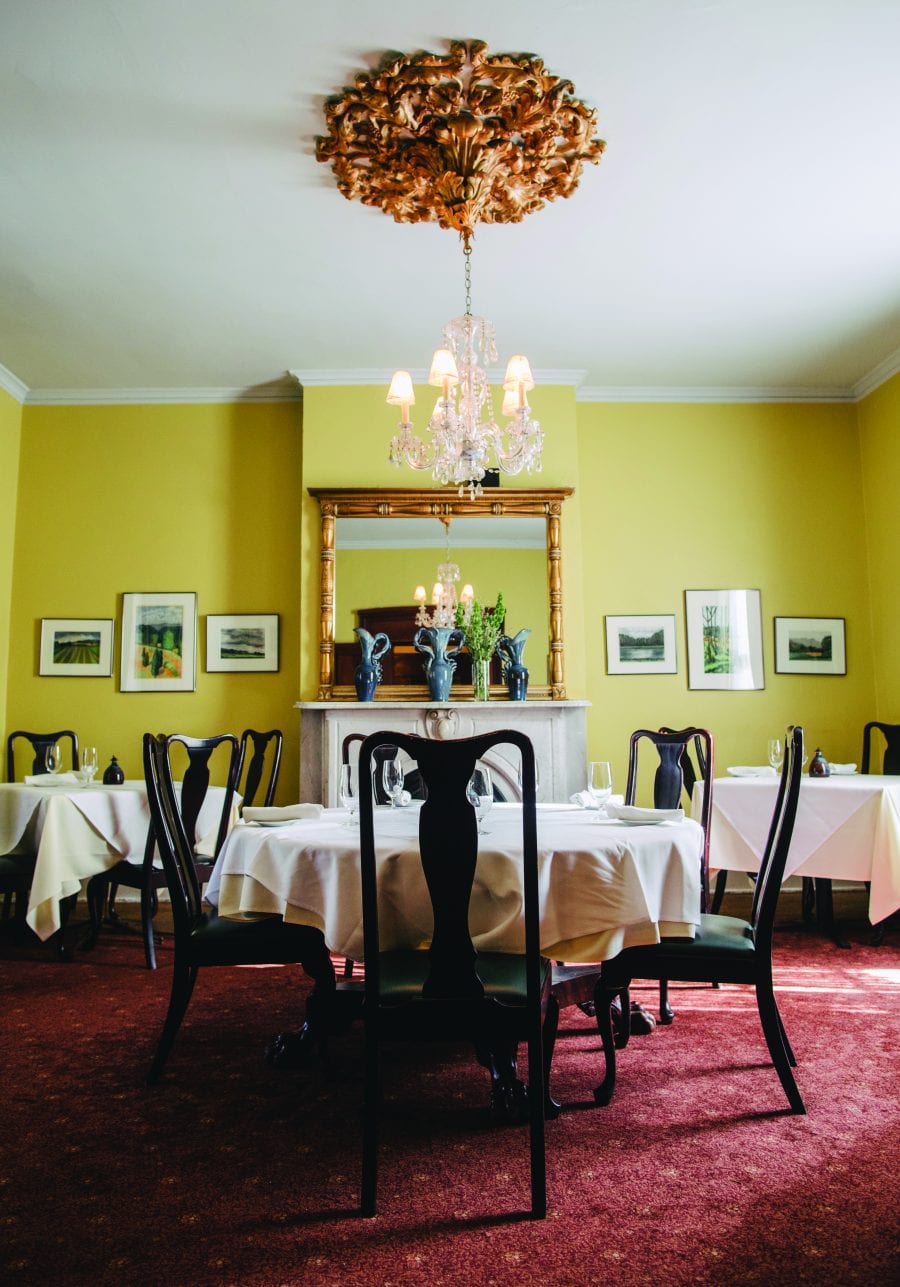
And she doesn’t limit “Kentucky cuisine” to beaten biscuits and burgoo. “If your parents came here from Thailand, and you’ve lived in Kentucky most of your life, your cultural heritage is Thai, but you can still use Kentucky ingredients in your pad thai,” she says. “Then it’s Kentucky cuisine; it’s both.”
Stepping Out
“I don’t want to be a trend chaser, but I want to talk out maybe changing a few things,” she says. Her face, with red-frame readers perched on her nose, is lit by the bright morning sun and curiosity as she goes around the large dining room table asking opinions on Honeywood’s menu style. She’s chatting with graphic designers in her Midway office about replacing verb-driven descriptions of dishes with just an ingredient list.
It’s a small detail, but one of many she’s constantly evaluating to ensure every element benefits the overall experience. Her company has more than 200 employees and will be adding another 50 soon, as her new (yet unnamed) downtown Lexington restaurant opens this summer. She’s overseeing a culinary empire, something that wasn’t part of the original plan. “It just grew, and for a while I was still running the Holly Hill kitchen with all of this other going on.” Three years ago, when she turned fifty, her mom passed away. That strife and the compounding stress of her multiple restaurants pushed a breakthrough. “My identity was wrapped up in being a chef, but I realized, you can either work in your kitchen or run your business, and I had been doing a kinda crappy job at both.”
She turned Holly Hill’s kitchen over to chef Tyler McNabb, and stepped up to truly helm her company. But she still cooks: every day at home for her family (including a picky 13-year-old), at events, and anytime she gets out of sorts. “When I get owly, I go into the kitchen and get centered,” she says. “That’s my treat now.” Another pleasure is delving into the strategic side of what her restaurants serve. “I get to do more recipe research, and I love that,” she says.
In 2017, she took another leap, opening Honeywood in an environment about as different from her other spots as she could get: an upscale mall, but a mall nonetheless. The developers spent months convincing her. “Going into the heart of chain restaurant territory and doing local food is a challenge,” she says. “But we’re doing it.” Servers ferry plates of Kentucky beef burgers smothered with a silky mayo-cheddar spread and resting between two crisp-tender hoecakes; earthy carrot croquettes; and snack portions of country ham, biscuits, and pickles to diners in an airy room with natural light bouncing off whitewashed brick, dark wood, and brass accents. It’s warm and comfy, yet elegant. “I’m really proud of this place; the vibe turned out just right,” she says.
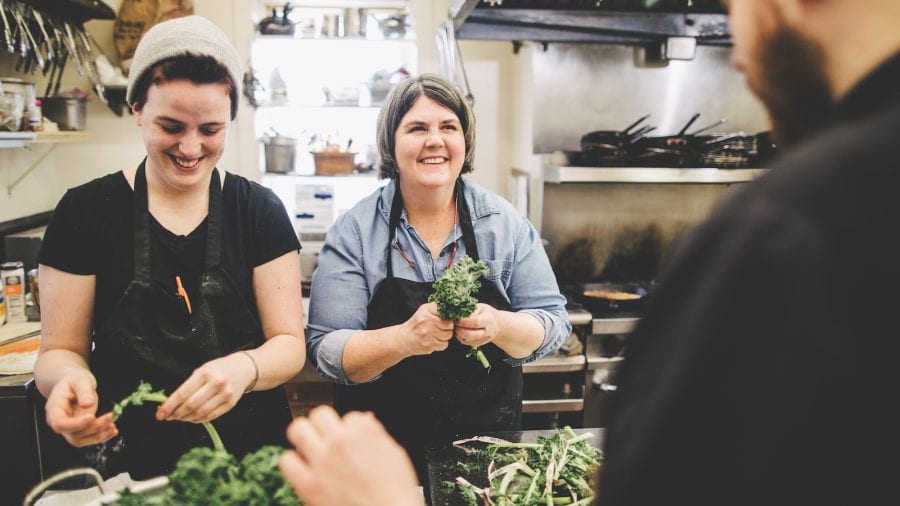
Cooking’s Call
“I want more chives and dill, but we were swimming in basil last year,” says Honeywood’s executive chef, Josh Smouse, as he and Michel go over a list of upcoming produce with one of Honeywood’s primary farmer-suppliers. Getting the right mix of ingredients in a way that works for the restaurant and for the farmer takes constant communication. The result is a steady stream of fresh food that Michel believes differentiates Smouse’s dishes from nearby offerings. “Our culture wants more spice, more sugar, more salt,” she says. “We forget what real food tastes like. It’s about balance; we want to make our food taste good without overpowering or outshining the ingredients.”
Striking balance is part of what drew her into the kitchen. “Cooking involves art, craft, history, politics, collaboration,” she says. She’s loved it since she was a child, helping her mom feed her two siblings, but then, in the days before cable food channels, she never imagined it was a career. “That was the 1970s; there weren’t many female chefs. There weren’t really chefs at all, not [ones] that everyday people knew about.”
She kept cooking for fun and went to the University of Kentucky, excelling on the UK debate team. She gave a few moments’ thought to law school, and then decided chef’s whites and sharp knives fit her better than dark suits and legal texts, and enrolled in the Culinary Institute of America. “There are so many aspects to cooking; I enjoy them all,” she says. She relishes competition too, a holdover from her debate days. “You don’t open this many restaurants without being competitive.” Michel has always been in it to win, but she’s fair-minded in her approach.
Changing the Game
“I need your input on pies we want to add to our existing selection for the new restaurant,” she says. Sitting again around a table, picking the brains of the employees at her Midway Bakery—which, housed in an old elementary school cafeteria, supplies breads and desserts to all her restaurants—Michel asks questions and listens to answers. She gives the bakers’ ideas and her own thoughts equal measure, but there’s no doubt she’s in charge. “It’s demanding to command a kitchen; it’s definitely a confidence game,” she says later at Honeywood, sipping the spot’s signature citrusy, bourbon-based cocktail. “You have to be confident in everything you are presenting to your staff so they understand where you’re coming from. As a woman, that’s even more important.”
The industry has a different playing field for women, she says. “There’s been a lack access, but it’s changing, and that’s exciting. I have a lot of women in my company, young women, and mentoring them is one of the things I like the most.” She touted the first all-female advisory council (that she’s on) for the 2018 Atlanta Food & Wine Festival as evidence of a shift. “That’s so great. A wonderful young woman, Elizabeth McCall, the master taster at Woodford, is serving with me.”
Hearing the multiple sexual harassment stories spilling out of the food world, she feels lucky. “I didn’t have any of those experiences,” she says. “But it’s a tough environment; you have to have a thick skin.” Creating a better working environment in her own kitchens is a priority. “When you’re young, you’re aggressive in the way you approach everything, at least I was,” she says. “Now, I have less stress with seven restaurants than I did with just one. I’ve matured.” And while she’s always set high standards for her employees, she values their work, and has shown it for years by providing full-time staff with health insurance, a rarity in the restaurant industry.
Cooking Up Connection
Michel’s quarter century in Kentucky has witnessed myriad changes, but one constant is her desire to create and nourish connections using food. “For me, cooking is a link—to a culture, to a past, to a person,” she says. “I recently got in the kitchen with a friend who taught me how to make her grandmother’s chicken and dumplings,” she says. “It was nothing complex, but it meant so much to go through that process with her.” Back in February, Michel served the dish at the James Beard House in New York City, adding her twists, making the grandmother’s dumplings, but with fried rabbit.
With the opening of her seventh restaurant in mere months, Michel says it will be her last, as she toys with writing cookbooks. “I’d like to do one that preserves heritage recipes but advances them too,” she says, “but that’s the tricky part, how to honor their past and also bring them forward to a new generation.”
And she’ll never tire of connecting Kentuckians to their past and to a brighter food future, through things like her work with area foodways programs and the non-profit Food Chain, where she’s a founding board member. “What I’m here to do is to express the culture of Kentucky through my food,” she says. “It’s not to be a New York chef in Kentucky, not to do the style of Le Bernardin in Kentucky. My career, my soul, my family, my value system: It’s all rooted in Kentucky; I am a Kentuckian.”
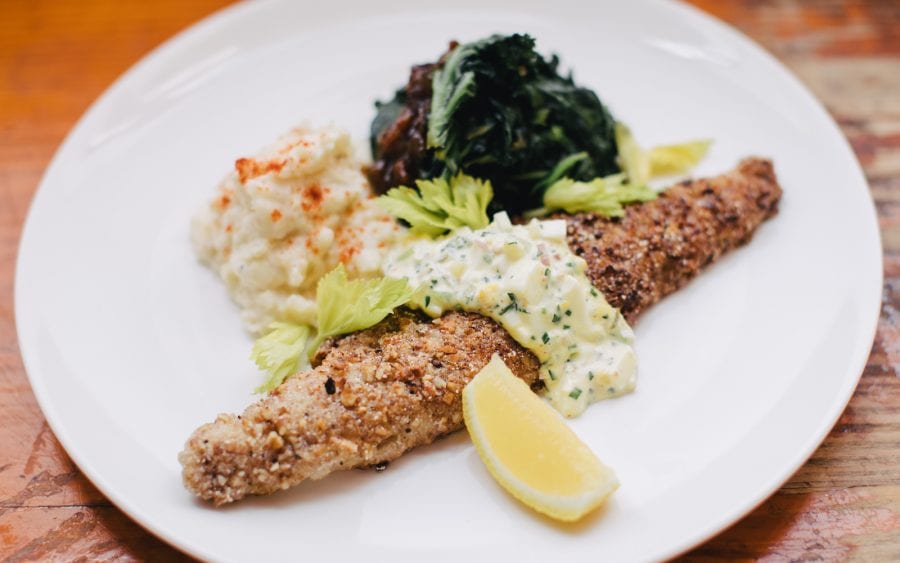
Pecan-Crusted Trout with Holly Hill Inn
Extra-Creamy Cheese Grits
For extra-rich grits, swap heavy cream for milk in the recipe. At the inn, Michel lets the grits sit over the pilot light for about an hour and a half “letting them swell,” as her sous chef, Lisa Laufer, says.
This story was originally published in the May 2018 Issue.
share
trending content
-
FINAL Vote for Your Favorite 2025 Southern Culinary Town
-
Get To Know Roanoke, Virginia
-
Shrimp and Grits: A History
by Erin Byers Murray -
New Myrtle Beach Restaurants Making Waves
-
FINAL VOTING for Your Favorite Southern Culinary Town
More From Key Ingredient
-
Sweet Talk: The Sensuous Power of Local Honey
-
Caramel Delights
-
Jason Stanhope’s Famous Celery Salad
-
Little Bursts of Summertime
-
A Better Butter Bean


